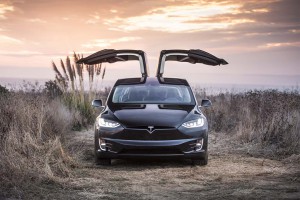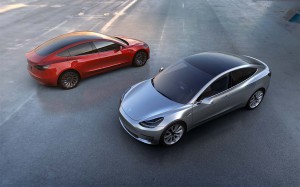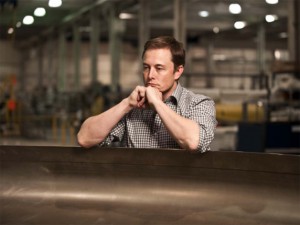Long struggling in the red, Tesla Motors delivered a surprise profit, the maker delivering more cars than expected for the third quarter, after a shortfall during the first half of the year.
The black ink, a total of $22 million, or $0.14 a share, was a much-needed boost for a carmaker struggling to launch its first mainstream product next year. The announcement came just days after Tesla took a sharp hit from influential Consumer Reports magazine, which declared the California carmaker suffers from serious quality and reliability issues.
The black ink sent shares of Tesla soaring after months of weak performance to $211.83 a share. But not all observers were convinced the company had achieved a long-sought breakthrough.
(Why did Tesla crash in the Consumer Reports survey? Click Here for more.)
“Our initial impression of the results … is favorable,” said Efraim Levy, equity analyst at CFRA Research. But he warned that heavy capital spending in the months to come will make the carmaker “cash flow negative and (Tesla will be) needing a capital market infusion in ’17, in our view.”
There is no question, observers say, that Tesla is burning through cash rapidly. Not only is the company investing in the development of the critical new Model 3 battery-electric sedan due out sometime during the second half of 2017, but it is setting up the multibillion-dollar Gigafactory battery plant in Reno, Nevada. Meanwhile, Tesla is expecting to win an upcoming shareholder vote that will allow it to proceed with the takeover of solar panel manufacturer SolarCity backed by founder and CEO Elon Musk.
Musk has promised significant synergies between the two companies, hoping to sell customers a complementary set of green technologies, including electric vehicles, backup power systems and solar energy-generating roofs.
“We look forward to making solar as compelling as electric vehicles,” Tesla said in its earnings report.
But, for now, even as it ramps up production of backup storage technology, battery-cars are its primary business.
Sales fell short of expectations during the first half of 2016, in large part due to problems with the launch of the Model X. The electric SUV has suffered from a variety of issues, including faulty door locks, glitches with its electronic display and control system and, most troubling, with the distinctive falcon-wing doors that are a big part of the vehicle’s visual appeal.
Declaring “there are some monumental challenges with that vehicle,” Jake Fisher, Consumer Reports’ director of automotive testing, said this week that the Model X ranked “the sixth least reliable vehicle” in the magazine’s annual owner survey. Despite resolving some quality issues with the older Model S sedan, Tesla itself ranked just 25th out of the 29 brands CR owners rated.
For its part, the maker responded, “The amount of issues we’ve addressed with Model X has fallen by 92% in the last 12 months, a reflection of our ability to make continuous improvements and react quickly.”
(Tesla CEO Musk warns that critics of autonomous vehicles are “killing people.” For the story, Click Here.)
Tesla production rebounded as those problems were addressed, and the company ended the third quarter with its Fremont, California, plant rolling out almost 1,000 vehicles a week. Overall, the carmaker said it exceeded production targets for the July-to-September quarter by about 300 vehicles, and it said it is holding to its overall goal of producing 50,000 Model S sedans and Model X SUVs for all of 2016.
The real test will come in 2017, however. While Musk has said there are no plans to raise additional funds this year, he hasn’t ruled out such a step in the lead-up to the Model 3 launch. The target date is soft, though he has suggested Tesla could build as many as 100,000 next year. The goal is to boost production to 500,000 by 2018.
Considering Tesla’s failure to meet any of its previous launch targets, there remains plenty of skepticism, but even coming close would be seen as a major step. The key, said analyst Joe Phillippi of AutoTrends Consulting, would be to ensure that the quality of the Model 3 doesn’t lag like it did, initially with Tesla’s earlier products.
There will be less room for forgiveness, he warned, among mainstream customers than those buying the current products – which can push well above $100,000 apiece.
But with Tesla reporting more than 337,000 advance reservations on hand by just the end of May, a successful Model 3 launch would likely push the maker solidly into the black, according to most analysts, and help it prepare for new competition from established competitors like General Motors, Volkswagen and Mercedes-Benz, as well as other start-ups, such as Chinese-funded Faraday Future.
(Fisker ready to launch new electric vehicle company, could see range of over 400 miles. Click Here for the latest.)




Tesla (and Musk) is one of those companies you root for, however, you still wonder in the back of your mind — will it all implode with so much debt?